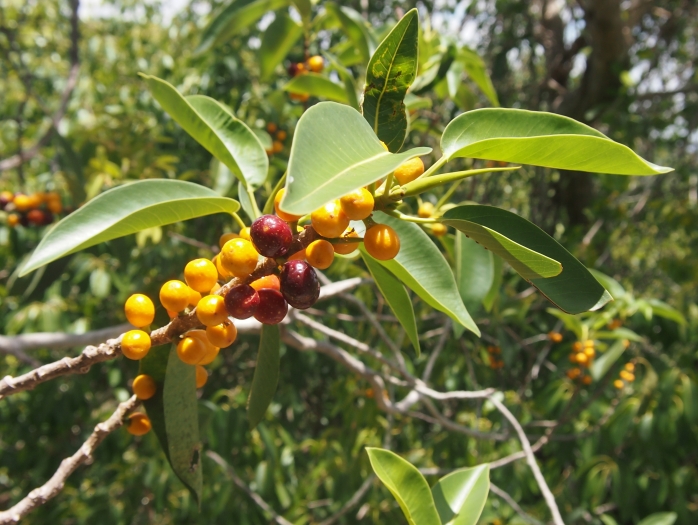Rock Fig
(Ficus platypoda)
Rock Fig (Ficus platypoda)
/
/

Mark Marathon
CC BY-SA 3.0
Image By:
Mark Marathon
Recorded By:
Copyright:
CC BY-SA 3.0
Copyright Notice:
Photo by: Mark Marathon | License Type: CC BY-SA 3.0 | License URL: https://creativecommons.org/licenses/by-sa/3.0 | Uploader: Mark Marathon | Publisher: Wikimedia Commons | Title: Ficus_platypoda_fruit.jpg | Notes: User created page with UploadWizard |





























Estimated Native Range
Summary
Ficus platypoda, commonly known as Rock Fig, is an evergreen tree or shrub native to rocky outcrops and gorges in arid and semi-arid regions of Australia. It can grow as a lithophytic or terrestrial plant, reaching up to 10 meters in height. The branchlets are covered in fine hairs, giving them a soft texture. The leaves are alternately arranged along the stems, elliptical to oval in shape, and measure 5.3 to 16.7 cm in length by 3.1 to 13.3 cm in width. The undersurface of the leaves is notably furry, which helps in water retention. The Rock Fig produces small, oval to round figs that can be various shades of yellow, orange, pink, red, or purple, measuring 0.9–2.8 cm in length by 1–2.8 cm across. These figs are an important food source for wildlife in its native habitat.
The Rock Fig is valued for its unique appearance and adaptability to a range of soil types, making it suitable for rockeries, native gardens, and as a feature plant in xeriscaping. It is drought-tolerant once established, requiring low to medium amounts of water, and prefers soils with medium drainage. Full sun is ideal for this species, promoting healthy growth and fruit production. While it is generally low-maintenance, it can be susceptible to root rot if overwatered or planted in poorly draining soils. Its ability to grow on rocky substrates makes it a fascinating subject for study in plant adaptability and survival strategies.CC BY-SA 4.0
The Rock Fig is valued for its unique appearance and adaptability to a range of soil types, making it suitable for rockeries, native gardens, and as a feature plant in xeriscaping. It is drought-tolerant once established, requiring low to medium amounts of water, and prefers soils with medium drainage. Full sun is ideal for this species, promoting healthy growth and fruit production. While it is generally low-maintenance, it can be susceptible to root rot if overwatered or planted in poorly draining soils. Its ability to grow on rocky substrates makes it a fascinating subject for study in plant adaptability and survival strategies.CC BY-SA 4.0
Plant Description
- Plant Type: Shrub, Tree
- Height: 15-20 feet
- Width: 15-20 feet
- Growth Rate: Moderate
- Flower Color: N/A
- Flowering Season: Spring
- Leaf Retention: Evergreen
Growth Requirements
- Sun: Full Sun
- Water: Low, Medium
- Drainage: Medium
Common Uses
Bird Garden, Drought Tolerant, Hedges, Low Maintenance
Natural Habitat
native to rocky outcrops and gorges in arid and semi-arid regions of Australia
Other Names
Common Names: Desert Fig, Small-Leaf Moreton Bay Fig
Scientific Names: , Ficus platypoda, Ficus lanata, Ficus platypoda var. typica, Urostigma platypodium, Urostigma platypodum, Urostigma platypodum f. minor,
GBIF Accepted Name: Ficus platypoda (Miq.) A.Cunn. ex Miq.